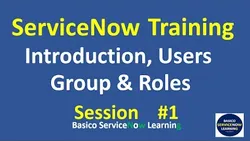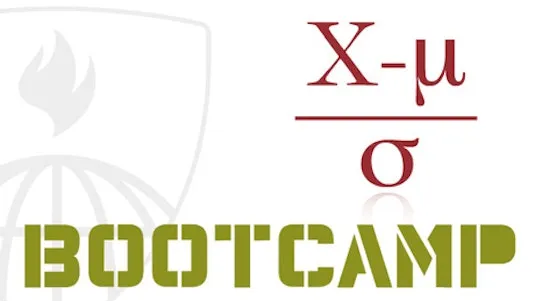
Biostatistics for Big Data Applications 
This course introduces students to the fundamentals of biostatistics and the R statistical software package. It covers topics such as statistical terms and concepts, omics and population-based studies, and data analysis techniques. Students will gain an understanding of how to apply biostatistical methods to big data applications. ▼
ADVERTISEMENT
Course Feature
![]() Cost:
Cost:
Free
![]() Provider:
Provider:
Edx
![]() Certificate:
Certificate:
No Information
![]() Language:
Language:
English
![]() Start Date:
Start Date:
Self paced
Course Overview
❗The content presented here is sourced directly from Edx platform. For comprehensive course details, including enrollment information, simply click on the 'Go to class' link on our website.
Updated in [March 06th, 2023]
This course provides an overview of biostatistics for big data applications. It covers fundamental components of biostatistical methods used in both omics and population health research. Participants will gain an understanding of common statistical terms and definitions, and learn basic statistical theory. The course also introduces the R statistical software package, and provides practice datasets and exercises to improve R programming skills. Self-assessment opportunities are also included to help participants gauge their understanding.
[Applications]
After this course, students should be able to apply the biostatistical methods and R programming skills they have learned to analyze biomedical big data. They should be able to identify and apply appropriate statistical tests to answer research questions, interpret the results, and communicate their findings. Additionally, they should be able to identify and address potential sources of bias and confounding in their data.
[Career Paths]
1. Data Scientist: Data Scientists are responsible for analyzing large datasets to uncover trends and insights. They use a variety of techniques, such as machine learning, statistical analysis, and data mining, to identify patterns and develop predictive models. Data Scientists are in high demand as organizations increasingly rely on data-driven decision making.
2. Biostatistician: Biostatisticians use statistical methods to analyze data related to health and medicine. They design experiments, analyze data, and interpret results to inform decisions about public health and medical treatments. As the healthcare industry continues to grow, the demand for biostatisticians is expected to increase.
3. Clinical Research Coordinator: Clinical Research Coordinators are responsible for managing clinical trials and research studies. They coordinate the activities of the research team, ensure compliance with regulations, and collect and analyze data. Clinical Research Coordinators are in high demand as the healthcare industry continues to expand.
4. Epidemiologist: Epidemiologists use data to study the distribution and determinants of health-related events in populations. They use statistical methods to identify risk factors and develop strategies to prevent and control diseases. As the healthcare industry continues to grow, the demand for epidemiologists is expected to increase.
[Education Paths]
1. Bachelor of Science in Biostatistics: A Bachelor of Science in Biostatistics is a four-year degree program that provides students with a comprehensive understanding of biostatistical methods and their application to biomedical research. Students learn how to design and analyze experiments, interpret data, and develop models to solve complex problems. This degree is becoming increasingly popular as the demand for biostatisticians grows in the healthcare and pharmaceutical industries.
2. Master of Science in Biostatistics: A Master of Science in Biostatistics is a two-year degree program that provides students with an advanced understanding of biostatistical methods and their application to biomedical research. Students learn how to design and analyze experiments, interpret data, and develop models to solve complex problems. This degree is becoming increasingly popular as the demand for biostatisticians grows in the healthcare and pharmaceutical industries.
3. Doctor of Philosophy in Biostatistics: A Doctor of Philosophy in Biostatistics is a four-year degree program that provides students with an in-depth understanding of biostatistical methods and their application to biomedical research. Students learn how to design and analyze experiments, interpret data, and develop models to solve complex problems. This degree is becoming increasingly popular as the demand for biostatisticians grows in the healthcare and pharmaceutical industries.
4. Master of Public Health in Biostatistics: A Master of Public Health in Biostatistics is a two-year degree program that provides students with an understanding of biostatistical methods and their application to public health research. Students learn how to design and analyze experiments, interpret data, and develop models to solve complex public health problems. This degree is becoming increasingly popular as the demand for biostatisticians grows in the public health sector.
Course Provider

Provider Edx's Stats at AZClass
Discussion and Reviews
0.0 (Based on 0 reviews)
Explore Similar Online Courses

Lean Six Sigma Black Belt Certification Part 1: Basic Improvement Define and Measure

ServiceNow Development Training

Python for Informatics: Exploring Information

Social Network Analysis

Introduction to Systematic Review and Meta-Analysis

The Analytics Edge

DCO042 - Python For Informatics

Causal Diagrams: Draw Your Assumptions Before Your Conclusions

Whole genome sequencing of bacterial genomes - tools and applications

Doing Clinical Research: Biostatistics with the Wolfram Language

Introduction to Applied Biostatistics: Statistics for Medical Research


Start your review of Biostatistics for Big Data Applications